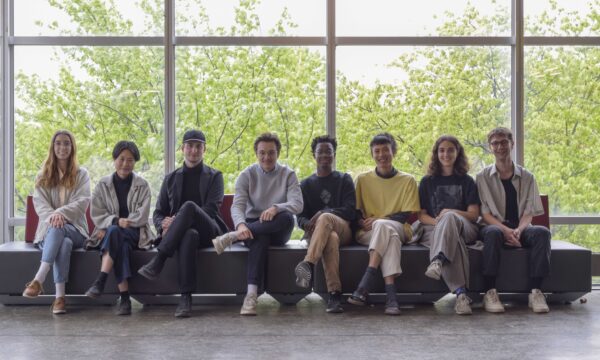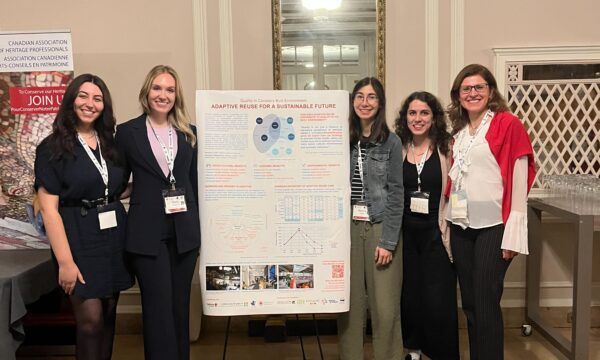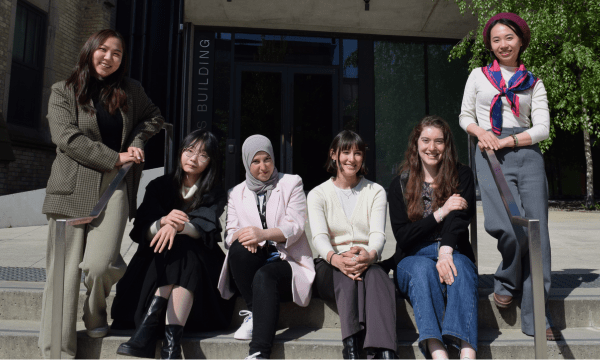SSHRC Concordia Graduate Students:
RESEARCH SITE: Led by Concordia University
THEME: Spaces for Health and Aging in the City: Livability, Biodiversity, Decarbonization
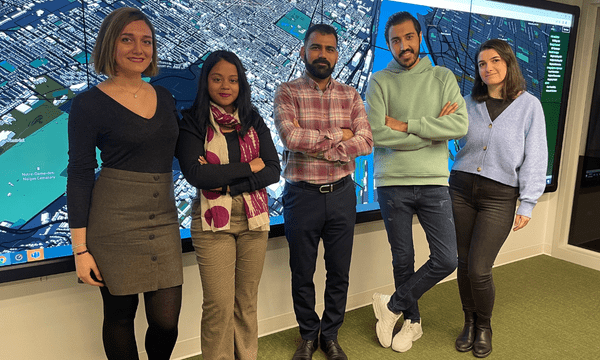
From Left: Negar Rahimi, Firdous Nizar, Morteza Hazbei, Mohammad Reza Seyedabadi, Tatev Yesayan
Our student researcher team at Concordia University is focusing on assessing Spaces for Health and Aging in the City, with a focus on livability, biodiversity, and decarbonization. We are a dynamic group of researchers with diverse backgrounds in architecture, building engineering, and biodiversity, and we are excited to investigate the quality of the built environment for elderly people from multiple perspectives. Our goal is to identify ways to enhance the quality of life for elderly people by enhancing the quality of the built environment.
Below is the list of all the current members of the Concordia team in an alphabetical order. Each student was asked to introduce themselves, telling us about their nationality, background and their current program. We also asked the following questions:
- What does “Quality” in the built environment means to you in ONE word?
- Where is your favorite place in Calgary that you like the most and maybe one that resembles that one word from the previous question? (This place can be a small, large, public, private, house, garden, mall, park, recreation, corridor, lounge– literally anywhere!)
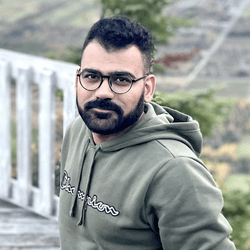
Morteza Hazbei, PhD Candidate, Individualized Program, Concordia University (5th year)
Short Bio:
I’m Iranian. I obtained my bachelor’s and master’s degrees in Architecture from the prestigious Art University of Isfahan; currently, I am pursuing a Ph.D. in an interdisciplinary program under the supervision of Dr. Carmela Cucuzzella at Concordia University. My research focuses on the impact of parametric architecture on the identity and context of modern cities. Through my work, I am seeking to better understand how this approach to design is reshaping our built environment and how we can ensure that it remains relevant and responsive to the context of our cities. I am also the Concordia Student Team Lead of the SSHRC partnership Quality in Canada’s Built Environment.
What quality in the built environment means to you in Few words? Livability
Where is your favorite place in Montreal that you like the most and maybe one that resembles that one word from the previous question? There is a small park in my neighborhood located at NDG. I often observe people having their lunch there and children playing, and there are also some shops around the park that enhance the livability of the area.
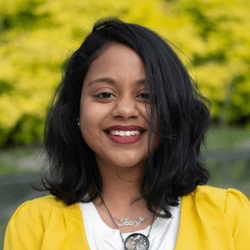
Firdous Nizar, PhD Student, Individualized Program, Concordia University (3rd year)
Short Bio:
I’m Indian. I have a bachelor’s degree in architecture and urban design and a masters in design. I am currently in my third year being enrolled at the Individualized PhD program at Concordia University. Lying at the intersection of sustainable urban design, architecture quality and development journalism, my research is tentatively titled, “Equitable Cities: Addressing Women’s Access to Public Spaces.” The research seeks to address the factors that affect inclusive access and rights to the city for women in Canadian cities by assessing urban policy and the UN SDGs (goals 5, 10 & 11). My primary supervisor is Dr. Carmela Cucuzzella and I have been working as a research assistant and coordinator for her Concordia University Research Chair, Integrated Design and Sustainability for the Built Environment (IDEAS-BE) for the past 5 years. I am working on the policy data collection and analysis for this partnership.
- What quality in the built environment means to you in Few words? Freely accessible and inclusively designed spaces that foster a sense of belonging and collective ownership
- Where is your favorite place, that you like the most and maybe one that resembles that one word from the previous question? Bank St, particularly within the Glebe neighborhood, have vibrant storefronts that are welcoming and well-lit throughout the day. It also has ample sidewalks, benches, bike racks, and dedicated bus stops and lines along this street. There are large murals and cultural activities that take place in the Glebe region. There is also a wide range of restaurants, cafes and pubs with diverse ethnic cuisines and inclusive prices.
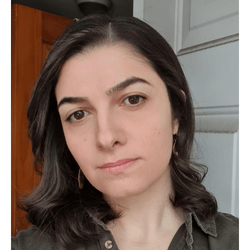
Tatev Yesayan, Master’s Candidate, Master of Design, Concordia University (1st year)
Short Bio:
I’m an Armenian student in the first year of the Master of Design program at Concordia, under the supervision of Dr. Carmela Cucuzzella. I’ve completed my BFA in Design also at Concordia, specializing in industrial design and public spaces. My current research interests surround the political dimension of design and the role designers play as mediators in complex design processes involving many stakeholders, considering their respective interests and influence on the process.
What quality in the built environment means to you in Few words? Livability. Spaces where people feel good.
Where is your favorite place, that you like the most and maybe one that resembles that one word from the previous question? The Jean-Talon market area and my street, the “Petit Laurier”. These are places where there is a sense of community, as if you’re in a little village where everything you need is at walking distance (parks, restaurants, cafés, art galleries, grocery stores, gyms, etc.) all the while keeping the charm of small commercial and residential streets.

Mohammad Reza Seyedabadi, PhD Candidate, Building, Civil, and Environmental engineering department, Concordia University (3rd year)
Short Bio:
I am Iranian and I am a Ph.D. student in the Department of Building, Civil, and Environmental Engineering at Concordia University. I studied general civil engineering for my Bachelor’s and environmental engineering for my Master’s at the Ferdowsi University of Mashhad. The main focus of my research during my Master’s was the life cycle assessment (LCA) of the building industry that in my Ph.D. extends to the Energy modeling and LCA on an Urban Scale considering all city objects ranging from buildings to transportation infrastructure, water distribution systems, and urban greenery.
- What quality in the built environment means to you in Few words? Energy efficient buildings with less carbon emissions.
- Where is your favorite place, that you like the most and maybe one that resembles that one word from the previous question? Dompark Complex is my favourite project in Montreal. Since I was involved in a project regarding the decarbonization of the building site and I have seen the eager of the stakeholders who were involved regarding the built environment sustainability and the steps which have been taken in this regard.
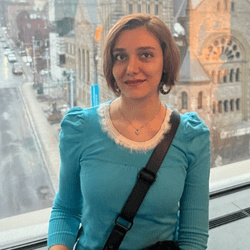
Negarsadat Rahimi, PhD Student, Individualized Program, Concordia University (3rd year)
Short Bio:
I’m Iranian. I obtained my B.A. and M.Sc. degrees in Architecture, specializing in Architectural Technology. I am studying for my Ph.D. in an interdisciplinary program under the supervision of Dr. Carmela Cucuzzella and Dr. Ursula Eicker at Concordia University. My thesis title is: “Understanding the Façade Retrofitting by Minimizing Heating and Cooling Demand while Considering the Impact of Façade Design on sustainability and livability of the City.” I am working on the categorization of façade design and façade retrofitting to conclude the impact of façade design on the city environment. As a part of the CERC team, my focus is on developing a catalogue for façade systems in buildings and façade retrofitting based on the energy simulation of the building and its needs.
- What quality in the built environment means to you in Few words? A good amount of greenery, spaces for social activities, more areas for walking, fewer cars, and reasonable access to groceries and other needed shops.
- Where is your favorite place, that you like the most and maybe one that resembles that one word from the previous question? My favourite place in case of quality of life in Montreal is Le Plateau-Mont-Royal. That is the most livable neighbourhood in Montreal because of the good access to parks, shops, restaurants, etc. furthermore, lots of social activities usually take place there, and walkability is more than in other places.
